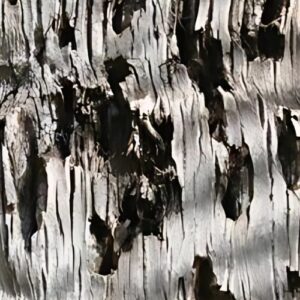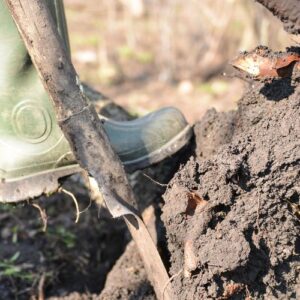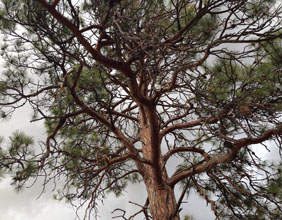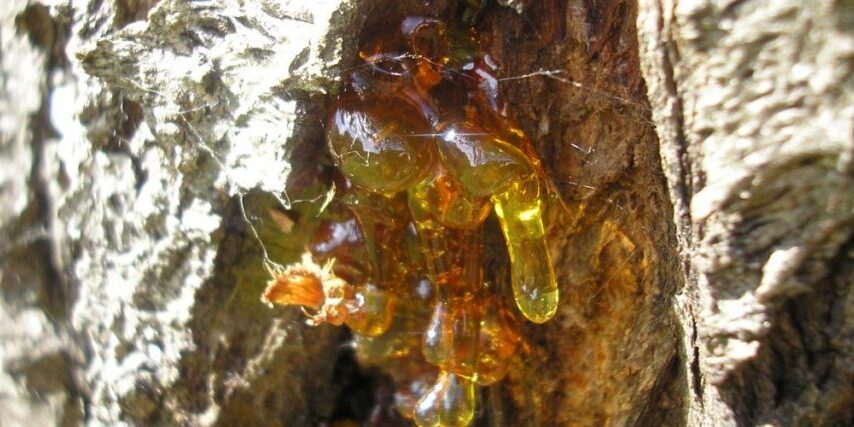
Spring in the Phoenix and Anthem areas can look like the desert is “waking up.” Spring flowers appear on shrubs, trees, and various forms of cactus. New, light green leaves are sprouting on trees. Local wildlife is out and about, and you’re more likely to spot lizards, snakes, insects, quail, roadrunners, and more.
One of the lesser-known signs of spring and early summer can be sap oozing from tree trunks. In this article, we’ll cover:
- What sap is,
- Why sap may be oozing from your tree trunks,
- Pest and disease issues associated with sap, and
- Ways that you can prevent sap bleeding.
Keep reading to find out all about tree sap in the desert and what to do if you spot sap dripping down your trees.
What is tree sap?
Spring and early summer are the growing season for trees in the desert southwest, which means that the interior parts of a tree are moving more. Part of that movement involves fluids that are moving from the roots to the leaves, and from the leaves to the roots.
The tree takes up water and nutrients from the soil and moves it towards the branches and leaves through the xylem (vascular tissue that conducts water throughout the tree). Phloem then moves sugars that are created in the leaves (through photosynthesis) back down through the tree and to the roots. These networks of fluids are similar to the circulatory system in humans and animals.
Listen to water and air moving through a tree here >>
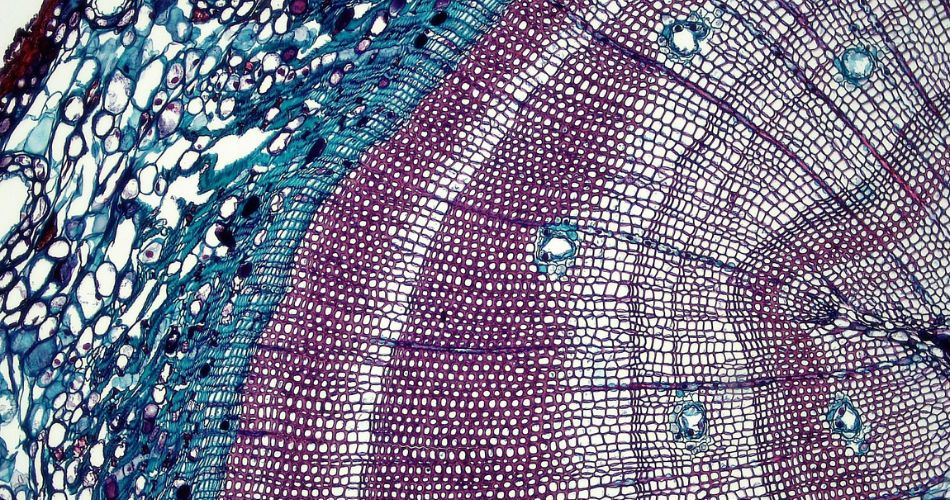
Sap can refer to the liquid found in either the xylem or the phloem, but is most often the latter. Phloem sap is filled with sugars and creates a sugary substance when dried. In fact, one of the most popular kinds of sap, usually from sugar maple trees, is boiled down into maple syrup.
An interesting sidenote is that xylem pathways change every year. When a tree is cut down, take a look at the growth rings. Those rings are all of the xylem channels that were used over the years of the tree’s life.
What does it mean if sap is oozing from a tree?
Just as a cut on your finger may mean you lose some blood, any damage to a tree can result in sap leaving a tree. This is especially noticeable during spring or summer when sap is flowing much more quickly.
Damage to a tree can include broken branches (such as from to monsoon damage), holes from animals (like from a woodpecker), or occasionally damage from bark beetles (although the palo verde beetle is the most common beetle here, and it only attacks the roots of trees, not the trunk or branches).
Sun damage can also cause tree bark to crack (as we mentioned in our article on heat stress), which could allow some sap to seep out. Damage from yard tools such as lawnmowers, edgers, and pruning tools can cause sap oozing as well.
Often in the Phoenix and Anthem areas, however, sap seeping from a tree is the result of active tree growth. If conditions are good for the tree to grow, the branches and trunk can sometimes grow faster than the bark. This leads to splits in the bark where – you guessed it – sap can leak out.
Should I be concerned if my tree is oozing sap?
It depends. Sap can be a sign that your tree is in good health, with the interior of the tree working hard to create energy for it to grow and thrive.
Usually, however, oozing sap does point to some kind of injury.
If the injury is caused by something that you control, such as a hammock or rope digging into the tree, a pruning injury, or vandalism, try to take steps to ensure that the injury does not continue or happen again.
If your tree’s bark is splitting from growing too quickly, be sure that the tree is getting the correct amount of water. And, if you are fertilizing, be sure you are applying the right amount of fertilizer at the correct times of year. If you have any questions, contact the professionals at Titan Tree.
Since sap is basically sugar, it can attract some insects and other pests that can make the situation worse.
What pest issues are associated with sap?
In the desert southwest, we don’t have many insects that cause sap seepage from trees. Insects that show up to eat the sap, however, can cause health issues for your tree down the road.
Aphids, for example, eat the sap and then leave behind a substance called honeydew (not to be confused with the fruit of the same name). This honeydew could potentially turn into sooty mold, which is detrimental to trees.
What does it mean if the sap keeps oozing?
In most cases, sap seepage will stop on its own, much as our bodies create scabs over wounds. We don’t recommend putting anything over the site of the injury on the tree, as this can lead to more problems.
If, however, dripping sap is an ongoing, chronic issue, it may have become something called “slime flux.” Though it sounds like something from a sci-fi movie or a weird combination of “Ghostbusters” and “Back to the Future,” slime flux is an all-too-real tree disease, though rare.
Not much is known about slime flux, other than it is probably caused by various forms of bacteria. In some places, it is referred to as wetwood, because the tree can appear water-soaked or discolored in the area below where the sap is bleeding out. Other signs can include wilting leaves and branch dieback.
In this case, the sap is contaminated and becomes a darker color, as well as more sticky, with a strong smell. It is basically an infected wound.
Slime flux in Arizona is most commonly found on the following:
- Ash trees
- Elm trees
- Cottonwood trees
- Mulberry trees
- Mesquite trees
Just as with any other sap issues, the best method of preventing slime flux is to keep your tree healthy, avoid any injuries, and make sure it is properly watered and fed.
What is the best way to prevent sap from leaking from my tree?
Like most other pest issues and diseases that we’ve covered, the best prevention is to keep your trees healthy and well-maintained. Remove any dead or broken branches, don’t over-prune your trees, and make sure your trees are getting enough water. Or, for best results, contact the tree professionals at Titan Tree to help you maintain the health of your trees.
Knowing that trees can “bleed” when cut is another example of how we have more in common with these shade-givers and oxygen-producers than you might have realized!
More Articles Like This

Titan Tree Care is a full-service tree care company located in Anthem, AZ and serving all of North Phoenix. We offer a wide range of services to meet your tree care needs, including tree and palm trimming, tree pruning, tree removal, stump grinding, and more. We also offer insect or disease treatments and fertilization services. We are dedicated to providing high-quality, safe, and effective tree care services to our customers and work hard to ensure that your trees are healthy and look their best.





